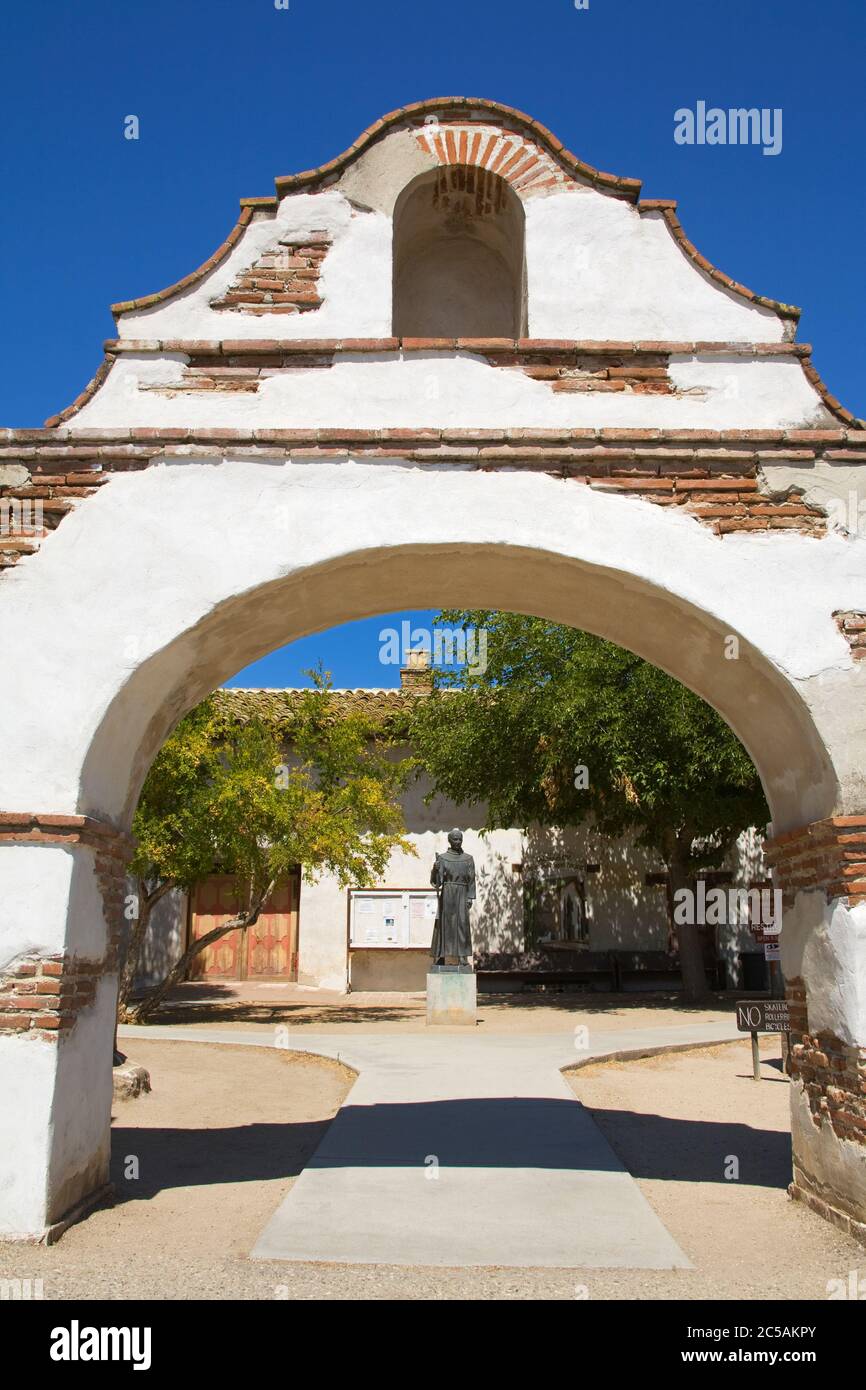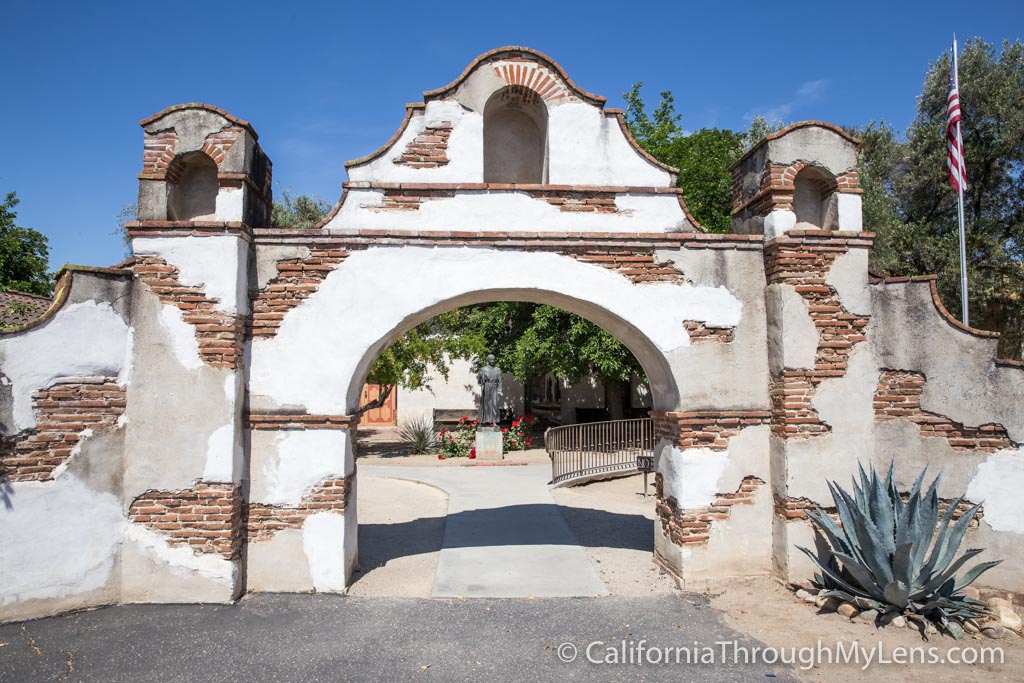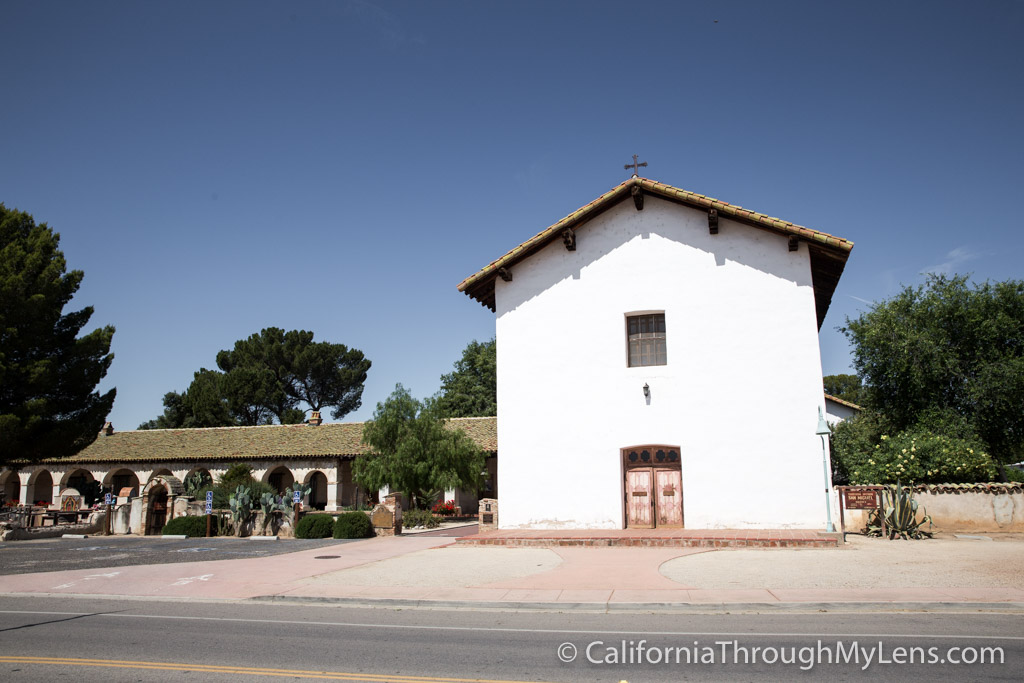
Mission San Miguel Arcángel: Where Time Stands Still and History Whispers
Nestled amidst the golden, oak-studded hills of California’s Central Coast, just off the historic El Camino Real, stands Mission San Miguel Arcángel. At first glance, it might appear as one of the twenty-one venerable beads on the rosary of California’s mission chain. Yet, step inside its hallowed church, and you are immediately transported across centuries. Here, the very air seems to hum with the echoes of centuries past, and the vibrant, original frescoes that adorn its walls offer a direct, unfiltered glimpse into the artistic and spiritual heart of early California, unlike any other mission.
In a state celebrated for its relentless pursuit of the new, Mission San Miguel Arcángel remains an enduring testament to the old, a living museum that miraculously escaped the fate of modernization and artistic overpainting that befell so many of its counterparts. It is a place where history isn’t just displayed; it breathes.
The Genesis of a Spiritual Outpost

The story of Mission San Miguel begins, as do many, with the strategic vision of the Franciscan friars. By the late 18th century, a significant gap existed in the mission chain between Mission San Antonio de Padua to the north and Mission San Luis Obispo de Tolosa to the south. This vast stretch of land, rich in resources and home to the Salinan people, was deemed ideal for a new spiritual and agricultural outpost.
On July 25, 1797, Father Fermín Francisco de Lasuén, the indefatigable architect of the mission system and successor to Junípero Serra, laid the cornerstone. The site chosen was near the Salinas River, offering fertile ground and a reliable water source. The new mission was dedicated to Saint Michael the Archangel, the celestial warrior, perhaps an apt namesake for an institution destined to face its own battles against time and circumstance.
The initial years were marked by the arduous labor of construction, carried out primarily by the local Salinan people. Under the guidance of the friars, the Salinan learned new agricultural techniques, animal husbandry, and trades such as carpentry, masonry, and weaving. They built the first rudimentary structures of adobe and wood, establishing the foundations of what would become a thriving, self-sufficient community. Within a decade, the mission boasted a significant population of neophytes (converted Native Americans), vast herds of livestock, and productive fields of wheat, barley, and corn.
A Canvas of Faith: The Unparalleled Frescoes
While all missions served a similar purpose, Mission San Miguel Arcángel distinguishes itself through its remarkably preserved interior. In 1821, a Spanish artist named Esteban Munras, from Monterey, was commissioned to decorate the mission church. He brought with him a talented assistant, Juan Bautista Guijarrón, who possessed a rare artistic sensibility. Crucially, Guijarrón trained and collaborated with the Salinan neophytes, transforming the bare adobe walls into a breathtaking tapestry of faith and color.
What makes these frescoes so extraordinary is their authenticity. Unlike most other missions where subsequent generations painted over or replaced original artwork, San Miguel’s interior remained largely untouched. "It’s a window into the past, a direct connection to the hands that shaped this mission," notes a local historian. "You’re seeing the colors and designs exactly as they were intended, almost two centuries ago."
The Salinan artists, guided by Guijarrón, employed a technique known as trompe l’oeil – "to deceive the eye." They painted intricate patterns that mimic marble, fluted columns, and arched ceilings, creating an illusion of grandeur and architectural complexity that belies the simple adobe structure. Vibrant blues, reds, yellows, and greens adorn every surface. Angels float on the ceiling, a watchful "Eye of God" gazes down from above the altar, and geometric motifs create a sense of order and devotion. The altar itself, with its reredos painted to resemble a series of niches holding statues, is a masterwork of illusion.
These frescoes are not merely decorative; they are didactic. They told biblical stories, illustrated theological concepts, and served as a constant visual reminder of the Christian faith for the newly converted Salinan people, many of whom were illiterate. The fusion of European artistic tradition with the unique interpretations and skills of the Native artists created a style that is distinctly Californian and profoundly moving.

Turbulent Times: Secularization and Decline
The golden age of Mission San Miguel, like its sister missions, was brought to an abrupt end by the forces of political change. Following Mexico’s independence from Spain in 1821, the new government viewed the mission system with suspicion, seeing it as a relic of Spanish colonial power and an impediment to land reform. In 1834, the Mexican government enacted secularization laws, dismantling the mission system and transferring control of the lands and assets from the Franciscans to civil administrators.
For Mission San Miguel, secularization was a period of rapid decline. The lands were parceled out, the mission’s vast herds dispersed, and the Salinan population, many of whom had become dependent on the mission system, were left vulnerable and dispossessed. The mission buildings themselves fell into disrepair. Over the next few decades, the church was used sporadically, and parts of the quadrangle served various secular purposes, including a general store, a saloon, and even a hotel. The once-bustling community dwindled, and the magnificent frescoes were left to the mercies of dust, neglect, and the occasional curious visitor.
A Return to Grace: Revival and Restoration
By the mid-19th century, with California’s annexation by the United States, efforts began to restore the missions to the Catholic Church. In 1859, President James Buchanan returned Mission San Miguel Arcángel, along with other mission properties, to the Diocese of Monterey. However, it wasn’t until 1878, with the arrival of Father Philip Farrelly, that a concerted effort to revive the mission truly began. Father Farrelly re-established it as an active parish, breathing new life into the neglected church.
Throughout the 20th century, various priests, community groups, and preservationists worked tirelessly to maintain the mission. The Native Sons of the Golden West played a significant role in early restoration efforts, and the California Missions Foundation, established later, provided crucial support. Yet, despite these efforts, the mission remained a fragile relic, its adobe walls vulnerable to the elements and, more significantly, to the seismic activity that defines California.
The Earthquake and a Miraculous Rebirth
The ultimate test of Mission San Miguel’s resilience came on December 22, 2003. The San Simeon earthquake, a powerful 6.6 magnitude tremor, struck the Central Coast, causing widespread damage. Mission San Miguel Arcángel, with its historic adobe construction, bore the brunt of the quake. Portions of the bell tower collapsed, the walls cracked, and the roof sagged dangerously. The damage was so severe that the mission was immediately closed to the public, and for years, its fate hung precariously in the balance.
The initial assessment was grim. Many feared the delicate frescoes, the mission’s most precious treasures, would be lost forever. "It was heartbreaking," recalled a long-time parishioner. "To see our beautiful mission, which had stood for so long, suddenly so broken, felt like a punch to the gut."
What followed was a monumental, six-year restoration project, a testament to modern engineering combined with a deep reverence for historical preservation. Engineers and preservationists faced the daunting task of stabilizing the adobe structure without damaging the irreplaceable artwork. Innovative techniques were employed, including injecting grout into cracks and reinforcing the walls with steel bars, all while meticulously protecting the painted surfaces. Estimates for the restoration soared to over $15 million, funded by a combination of federal, state, and private donations, including significant contributions from the California Missions Foundation.
Finally, on September 28, 2009, Mission San Miguel Arcángel reopened its doors to the public, a triumphant rebirth. The restoration had not only repaired the damage but had also significantly strengthened the mission against future seismic events, ensuring its survival for generations to come.
Mission San Miguel Today: A Living Legacy
Today, Mission San Miguel Arcángel continues its dual role as an active Catholic parish and a revered historical landmark. Visitors can once again marvel at the stunning church interior, attend services, explore the serene mission grounds, and wander through the small museum that tells the story of its past. The mission’s gift shop offers books, religious items, and crafts, helping to support its ongoing maintenance.
The mission serves as an educational beacon, drawing thousands of schoolchildren annually who come to learn about California’s colonial past, the mission system, and the lives of the Salinan people. It prompts reflection on the complex legacy of the missions – institutions that brought both faith and subjugation, progress and displacement.
The Salinan people, whose ancestors labored to build and adorn this mission, continue to have a presence in the region. Their story, often overshadowed by the Franciscan narrative, is an integral part of Mission San Miguel’s history. The mission today strives to acknowledge this complex past, fostering understanding and respect for all who contributed to its enduring legacy.
Mission San Miguel Arcángel is more than just an old building; it is a profound journey through time. Its unblemished frescoes, its resilient adobe walls, and its quiet courtyards whisper stories of faith, art, labor, and perseverance. In a world constantly rushing forward, this remarkable mission stands as a cherished reminder that some of the most profound truths can be found in the echoes of a past that, against all odds, refuses to fade. It is a place where history doesn’t just whisper; it sings.


